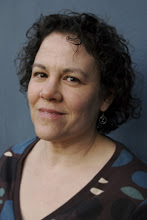
I’ve been published since 1999. Which means that, like many authors, some of my books are out of print. You can buy them used on Amazon or half.com, or you could break into my basement and steal a remaindered copy or two.
It’s hard to think that a book you loved and labored over is now forgotten except for the occasional library reader.
But now out-of-print books can have a second life. I started by putting my best-reviewed book to date,
Learning to Fly, on the Kindle. Today I added
Circles of Confusion, which has yet to sync up with the print version (but it did eventually with Learning to Fly).
 What you need
What you need-An Amazon account, which you already have if you have bought something from Amazon.
-The words. With luck, you still have the Word file that you submitted to your publisher. And again, with luck, they had you make changes on the file and re-send, rather than someone at the publisher someplace making changes. I’ve been proofing my old Word files before I post them on the Kindle. Nothing like not looking at something for five plus years to see typos.
And if you don’t have the words? You can scan in the book or manuscript. Lee Goldberg told me he scanned some of his out-of-print books using Omnipage 17 software. For one book, I used blueleaf-book-scanning.com and because I didn’t ask for anything fancy and didn’t ask for my book back, it only cost $12.15, plus $4.75 to mail them the book. Then they emailed me a word file.
-A cover image. My husband made me some new ones, using photos from istock.com. The photos were inexpensive, and my husband worked for free.
-Proof that you own the copyright. I just held up my “reversion of rights” letter from St. Martins to my Web cam, snapped a photo, and emailed it to Amazon. (Wait until they ask you for proof to do this step.)
-The ISBN of one of the print editions. When you are filling out the form to put your book on the Kindle, use the ISBN of your printed book. This will link it up with all your old reviews, both from readers and from publications.
What you get-Probably not a ton of money. At least I haven’t yet. I’ve heard from other authors that their lower-priced books sell more copies than when they had a higher price. So I priced mine at $1.99. I figured more folks would take a chance on me. Amazon and I split that, 65%/35%. So I get 70 cents, which is still 70 cents I wouldn’t have had otherwise. So far, I’ve made under $100.
-More readers. More readers for books I loved but no one could buy anymore, except for the occasional used copy changing hands. More readers who might be willing to pay more to read Kindle books my publisher holds rights to, or even my newer print books.
For more infoHere’s where you need to go on Amazon to get started. They have a lot of information about how to do it.
This is Lee Goldberg’s experience.
And while I doubt anyone else has had JA Konrath's success,
here’s part of his story.
How about you?Got more info than what I have, or know a blog that does? Know how to put books on a Sony E-reader or a Nook? Let me know.
More of the covers my talented husband designed for when I put the books on the Kindle


